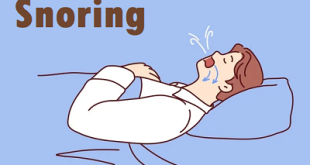Definition
Schistosomiasis, also known as bilharzia, is an infection caused by a parasitic worm that lives in fresh water in subtropical and tropical regions. It is a disease of poverty that leads to chronic ill-health. Infection is acquired when people come into contact with fresh water infested with the larval forms (cercariae) of parasitic blood flukes, known as schistosomes.
The microscopic adult worms live in the veins draining the urinary tract and intestines. Most of the eggs they lay are trapped in the tissues and the body’s reaction to them can cause massive damage.
Transmission of Schistosomiasis
- Eggs are eliminated with feces or urine. Under optimal conditions, the eggs hatch and release miracidia, which swim and penetrate specific snail, intermediate hosts.
- The stages in the snail include 2 generations of sporocysts and the production of cercariae.
- Upon release from the snail, the infective cercariae swim, penetrate the skin of the human host, and shed their forked tail, becoming schistosomulae.
- The schistosomulae migrate through several tissues and stages to their residence in the veins.
- Adult worms in humans reside in the mesenteric venules in various locations, which at times seem to be specific for each species.
Pathophysiology
Schistosomiasis is due to immunologic reactions to Schistosoma eggs trapped in tissues. The incubation period for acute schistosomiasis is usually 14-84 days; during this period antigens released from the egg stimulate a granulomatous reaction involving T cells, macrophages, and eosinophils that results in clinical disease.
Types of Schistosomiasis
There are three main types of schistosomiasis, caused by closely related organisms:
- Japonica, or Eastern, schistosomiasis is caused by Schistosoma japonicum, found in Japan, southern China, the Philippines, Thailand, and Indonesia.
- Manson’s, or intestinal, schistosomiasis is caused by mansoni, found in Africa, the Middle East, the Caribbean, and northern South America.
- Vesical, or urinary, schistosomiasis is caused by haematobium, found throughout Africa and the Middle East.
Eggs of Schistosome
Epidemiology of Schistosomiasis
- Schistosomiasis affects almost 240 million people worldwide, and more than 700 million people live in endemic areas.
- Several million people all over the world suffer from severe morbidity as a consequence of schistosomiasis.
- The infection is prevalent in tropical and sub-tropical areas, in poor communities without potable water and adequate sanitation.
- Globally, 200,000 deaths are attributed to schistosomiasis annually.
Causes
Schistosomiasis is a disease caused by infection with parasitic blood flukes. The three major species are
- Schistosoma mansoni (Africa and South America)
- japonicum (East Asia)
- haematobium (Africa and the Middle East)
The two minor species are
- mekongi (Laos, Cambodia)
- intercalatum (West and Central Africa).
Risk factors
- Skin exposure to contaminated freshwater
- Travel to endemic areas
- Age 4 to 15 years
Complications of Schistosomiasis
- Bleeding of the bladder
- Ulceration of the bladder
- Liver damage
- Eventual kidney failure
- Bladder cancer
- If the eggs get into the bloodstream they can get into various vital organs, resulting in lung, heart, intestinal and CNS (central nervous system) damage.
- Disease may recur
Clinical manifestations
- Inflammation
- Dermatitis (itching)
- Swimmers itch
- Cough
- Late-afternoon fever
- Skin eruption (giant urticaria)
- Swelling and tenderness of the liver
- There may be blood in the stools and urine in the more acute stage.
- Fatigue
- Fever and chills
- Muscle aches
- Weight loss
- Enlargement of the liver and spleen
- Diarrhea
- Abdominal pain.
- Seizures
- Paralysis
- Mental status changes
- Lesions on the vulva or the perianal area
Swimmers Itch
Diagnosis and Test
Diagnosis of schistosomiasis is based on:
- Detection of antigens or antibodies in the urine or blood.
- Detection of schistosome eggs in urine and stool samples. Intestinal schistosomiasis may be diagnosed by the Kato-Katz method that is used to detect parasitic eggs in fecal samples. In this method, cellophane, either soaked in glycerine or placed on a glass slide, is stained with methylene blue.
- Urogenital schistosomiasis may be detected with a filtration technique that uses polycarbonate, nylon, or paper filters.
- The urine tests positive for the presence of blood in case of urogenital schistosomiasis.
Management and Medications
- Currently, the drug used in most people is praziquantel (Biltricide); however, it only is effective against adult worms and does not affect eggs or immature worms.
- Corticosteroids are often used to reduce the symptoms of this reaction. Unfortunately, this response limits the use of praziquantel. Praziquantel and oxamniquine or artemether are used by some clinicians early in infections, or to treat individuals infected with both malaria and schistosomes, respectively.
Prevention and control
Several prevention and control strategies should be integrated to reduce the burden of schistosomiasis.
- Integrated vector control (IVC) measures, these measures involve using the chemical ‘Endod’ to kill the snails, and environmental management to destroy snail habitats by improving irrigation and farming practices; this could involve removing vegetation and draining and filling swampy areas or shallow pools wherever possible.
- Parasite control measures, treating water for washing with chlorine or iodine to kill the eggs and immature Schistosoma organisms.
- Personal protection against exposure to the parasites, e.g. farmers, fishermen and others who have to stand in infected water should wear rubber boots to protect their skin from penetration by the swimming forms of the Schistosoma parasites. Avoid swimming or wading in fresh water when you are in countries in which schistosomiasis occurs.
- Rapid case detection and referral to the nearest health center for effective treatment; the drug used to treat schistosomiasis is called praziquantel, which is administered orally at a dosage of 40–60 mg per kg of body weight, given in two or three doses over a single day. Praziquantel, which must be given at the health center, not by yourself.
- Education in the community about the causes and modes of transmission of schistosomiasis.
 Diseases Treatments Dictionary This is complete solution to read all diseases treatments Which covers Prevention, Causes, Symptoms, Medical Terms, Drugs, Prescription, Natural Remedies with cures and Treatments. Most of the common diseases were listed in names, split with categories.
Diseases Treatments Dictionary This is complete solution to read all diseases treatments Which covers Prevention, Causes, Symptoms, Medical Terms, Drugs, Prescription, Natural Remedies with cures and Treatments. Most of the common diseases were listed in names, split with categories.








controling vector may be tricky given that the vector may be living in the vast waters, if MDA is employed periodically to people living in and around these vast waters there could be massive drastic drop in of the infection, since mature parasites will be killed, (Mass Drugs Administration) MDA,
was it communicable
Schistosomiasis is a chronic communicable disease caused by parasitic flatworms
is the infection of bilhazia diseases a communicable diseases. my husband died for the infection of bilhazia, all the symptoms of the disease appear in him. and he has children.i need clarification pls
Yes, it is a communicable disease. Since the causative agent of this disease is spreading through stools and if there is no proper hygiene is followed then it tends to spread.
Hie,I have the disease what can I do I’m 30 years now
please consult a doctor.
i had a bunch of little white things looked like fuzzballs they seeped into my clotjing and then into my skin i tryed to take them off of me showered and the white thing came together and was bigger going into my pores . theres white pusslike substance i saw them seeping ito the layers of skin and going for blood . i went to er right away and the nurse practitioner couldnt dignos me with anything . i was told to wrap it in gauze and keep dabbing when i am wet from a shower \bath .not going away!
Please consult a doctor.
thanks it is very very amazing to find out health ideas with wink of eyes thumps up .I find it so super think again
Hey! Bilharzia had afflicted my soul for more than 10 years, i heard from a nurse that there is medication for the above parasite in Congo, these are the names of the herbs which cure Bilharzia or Schistosomes,
1. Elixir.
2. Wormwood plant.
please help if you can bring them to South Sudan and we can buy from you, your gratitude.